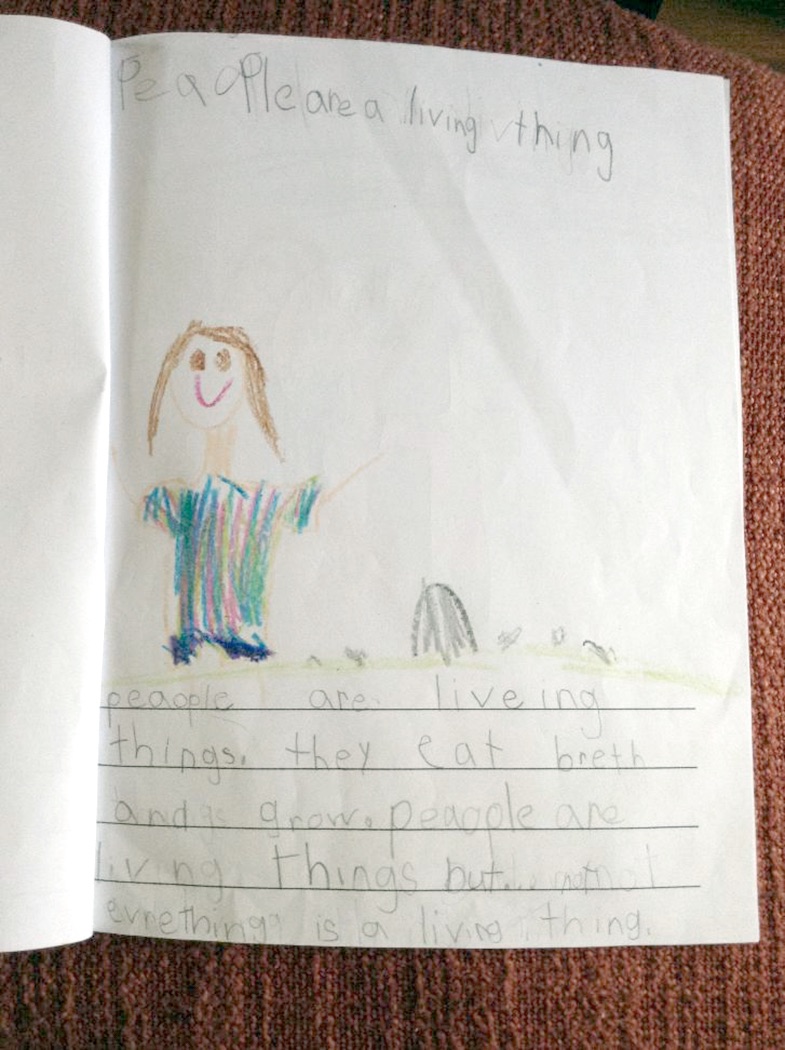Chapter 2: “It’s like we’re learning and having fun!” Writing NonFiction In The Kindergarten Classroom
“It’s like we’re learning and having fun!” Writing Nonfiction in the Kindergarten Classroom

by Elizabeth Jo Ingraham
While kindergartners often live in an imaginative world, much of what they write is nonfiction—facts about themselves and the world around them.
“I like yellow.”
“I went to the pool.”
Young children yearn to share their thoughts and experiences with the world. They want people to know they have a dog and they love their family. Writing provides an opportunity for these facts to be heard.
It is also the case that the simple text structure inherent in young children’s nonfiction writing allows them to enter into the world of authorship easily. They do not have to create characters and describe events in great detail. Instead they can list facts using high frequency words, environmental print and simple sentence structures.
In the following chapter I describe how I guide Kindergarten students from “I like dinosaurs” to “His neck is so long that it is the size of you,” from simple declarative sentences to more descriptive writing that purposefully entertains and informs readers. Carefully planned lessons, individual conferences, and time to write books on topics that interest them provide opportunities for students to move from writing a list of facts to making connections with content and using specific vocabulary. Likewise by studying high-quality nonfiction texts as readers, students begin thinking about how best to describe information as they consider what readers want to know and interesting ways to express information so that readers can understand it.